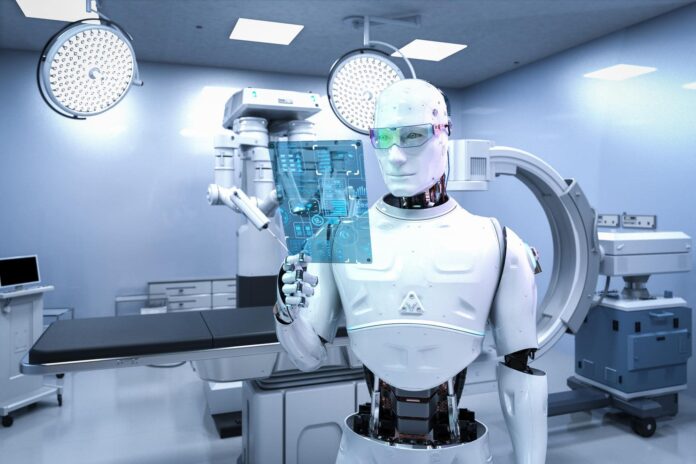The Hydraulic Robotics Arm
Welcome to the African Science Academy Engineering Club showcase! Our pressure-controlled robotic arm, a game-changer in robotics.
Imagine a robotic arm that is completely pressure-based and provides both flexibility and accuracy. W
ith a team of dynamic thinkers, this project demonstrates our commitment to innovation. Our design responds to pressure changes using simple mechanisms.
This article will explore the fundamental design principles and practical applications of our pressure-principled robotic arm. Join us on a journey through simplicity and effectiveness in engineering as we unveil the exciting possibilities of this developing project. Brace yourself for a glimpse into the future of technology!
The development of robotics has revolutionized the way we live and work. With the advancement of technology, robots have become more efficient and effective, making our daily lives easier and more productive. Our robotic arm works on the principle of pressure (Pascal’s principle) and is also an excellent example of how mathematics and physics can be applied to real-life engineering problems.
Pascal’s principle states that when pressure is applied to a fluid in a closed container, the pressure is transmitted equally in all directions. There are syringes filled with a fluid that is under pressure, and when pressure is applied to one syringe, it is transmitted to the various working parts, causing the arm to move in the desired direction.
Mathematics is also an essential tool in the development of this robotic arm. The mathematical models are used to calculate the size and shape of the syringes needed, the amount of fluid required, and the maximum load capacity of the arm. The arm is controlled by a simple mechanism that uses levers and pulleys to move the robotic fingers and lift and put three eggs into a basket within the shortest possible time. This mechanism is easy to operate and requires minimal training, making it accessible to many users.
The development team believes that the robotic arm has the potential to improve productivity and reduce the risk of damage in egg collecting. Its low cost and sustainable design make it an attractive option for farms and other businesses that rely on egg collection.
In the manufacturing industry, the arm can be used to pick up delicate objects like glassware and electronic components. The arm’s ability to pick up and move these objects without damaging them is essential for reducing waste and improving productivity. Also, the arm’s precision and dexterity make it ideal for performing intricate assembly operations, welding, and other repetitive tasks, increasing productivity and reducing error rates.
In the healthcare industry, the arm can be used in surgery to perform delicate procedures with precision and accuracy. It can also be used to assist patients with
disabilities in performing daily tasks. This will result in an improvement in the quality of life for these patients.
Beyond its technological limitations, the hydraulic robotics arm has significant ramifications. This invention can completely change sectors and propel economic growth in Africa, a region with limited access to automation and sophisticated technology. By automating tedious jobs, the arm can save costs, increase production, and provide new opportunities for local businesses and communities. Furthermore, due to its adaptability to many sectors and applications, it may be customized to meet individual needs. Global resource optimization and sustainable development are two areas where the hydraulic robotic arm can be useful. Automation replaces manual labor, lessening the physical strain on employees and lowering the possibility of accidents. Its effective hydraulic power utilization guarantees energy conservation, making it a green solution.
One promising extension of this technology is using advanced programming techniques to further improve the robotic arm’s performance. By incorporating computer science principles into the control algorithms, we can make the arm more responsive, adaptable, and efficient.
One approach could be to develop control algorithms that use machine learning techniques, such as reinforcement learning or deep learning. These techniques can allow the arm to learn from its experiences and adapt its movements based on feedback from the environment. For example, if the arm picks up eggs, it could learn which movements are most effective for handling fragile objects and avoid causing any damage. This type of learning can lead to a robotic arm that is more agile and effective in a wide range of tasks.
By combining the principles of pressure-based control with advanced programming techniques, we can create a robotic arm that is truly state-of-the-art and capable of handling a variety of complex tasks.
In conclusion, the hydraulic robotic arm represents a remarkable fusion of technology, mathematics, and physics. Its potential to transform industries, empower communities, and contribute to sustainable development is awe-inspiring. By leveraging its capabilities, we can increase productivity, enhance efficiency, and promote economic growth while fostering inclusivity and technological advancement worldwide.
As we continue to refine and expand its capabilities, we are committed to making this innovation accessible and beneficial to people across Africa and the world. Let us embrace the power of hydraulics and work together to shape a brighter future for all.
Pressure-based control concepts and sophisticated programming methods can be combined to build a genuinely state-of-the-art robotic arm that can perform a wide range of difficult jobs.
The hydraulic robotic arm has astounding potential to revolutionize industries, strengthen communities, and support sustainable development. We may boost output, improve effectiveness, and encourage economic expansion while supporting diversity and global technical progress through its utilization. We are dedicated to improving this as we continue to hone and enhance its capabilities.










